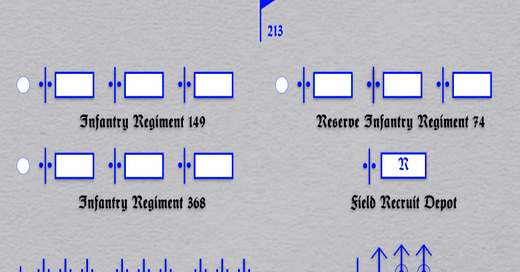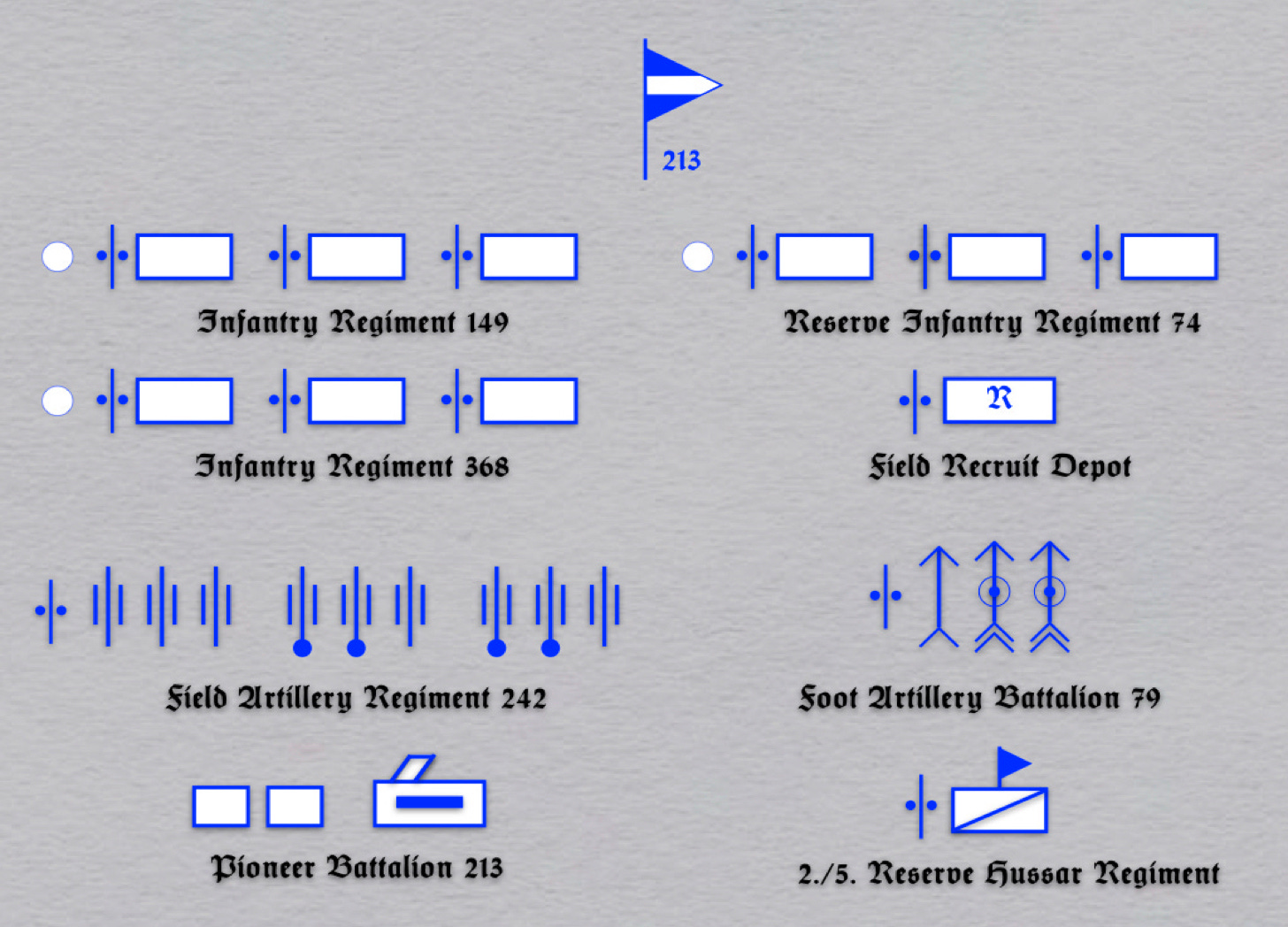In May of 1918, Captain Erich von Manstein was serving as the first general staff officer (Ia) of the 213rd Infantry Division. As such, he served both as the chief-of-staff of the division and its senior operations officer.
In many respects, the 213th Infantry Division was a typical German infantry division of the last year of the First World War. That is, it consisted of three infantry regiments (each of three battalions), a field recruit depot, three field artillery battalions, a battalion of heavy artillery, a squadron of cavalry, and a battalion of combat engineers (Pioniere.)
In keeping with the German custom of the day, most of the aforementioned units were well supplied with heavy machine guns. In some cases, such as the twelve heavy machine guns assigned to each infantry battalion and the six such weapons allocated to the field recruit depot, these were used chiefly against targets on the ground. In others, such as the six heavy machine guns provided to each artillery battalion (whether field or foot), they served chiefly as a means of combatting low-flying aircraft.
The Pionier battalion provided a home to the four heavy and eight medium Minenwerfer of the 213th Infantry Division. The thirty-six light Minenwerfer assigned to the formation, however, were divided among three twelve-piece companies. Each of these, which are depicted on the order-of-battle diagram as circles, belonged to one of the infantry regiments.
Indeed, the only major departure from the norm the organization of the 213th Infantry Division lay in the ratio of light field howitzers to field guns. Where most German infantry divisions of 1918 had three batteries of light field howitzers and six batteries of light field guns, the 213th Infantry Division had four batteries of light field howitzers and five batteries of light field guns. This made possible the organization of two of the division’s three field artillery battalions as mixed battalions of the type that Major General William Balck would endorse in his postwar writings.
Source: Documents of the 213th Infantry Division on file at the Military Archives of the German Federal Archives (BA/MA), PH 8 I/56.
For Further Reading:
To Share, Subscribe, or Support:







